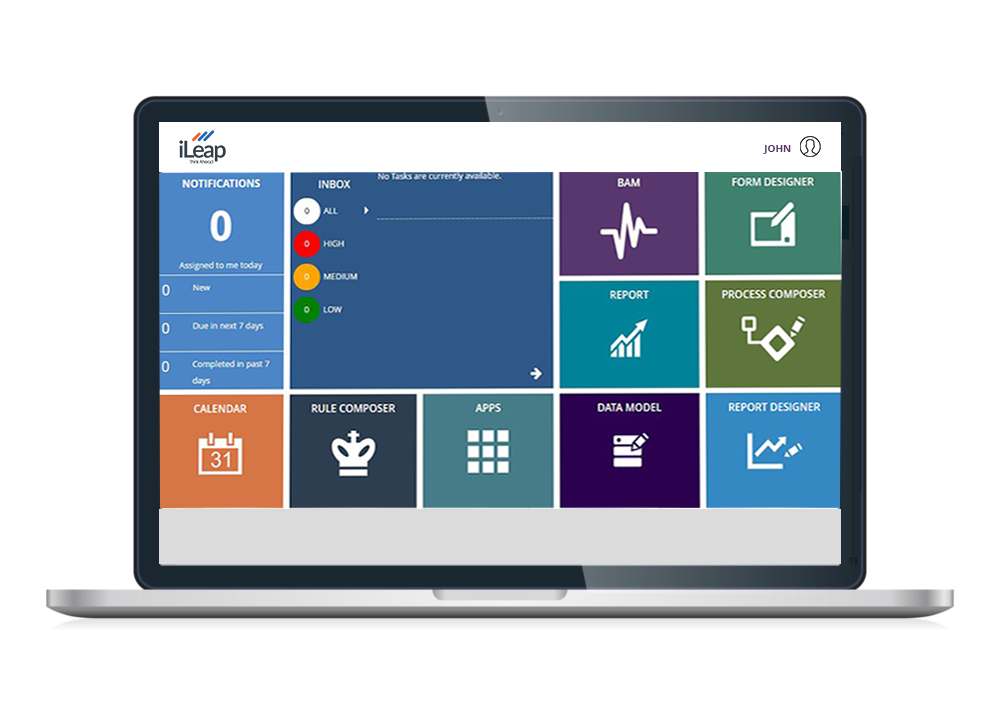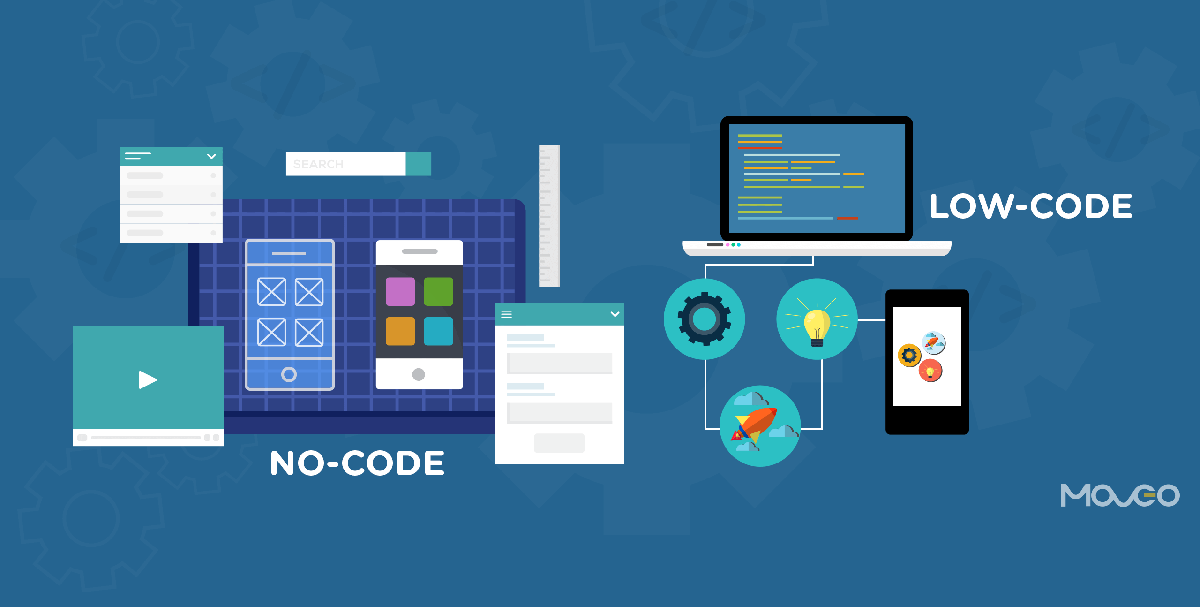Best Ideas On Picking Low-Code Platform Recommendations
Wiki Article
App Development Using Low-Code Is More Efficient.
Visual Development Environment :
Drag-and-Drop Interfaces: Low-code platforms provide visual tools for designing applications. Drag-and drop components are a great tool for developers to create apps without extensive code.
Templates and pre-built components: Many low code platforms include pre-built components and templates that allow developers to quickly prototype and create applications.
Reduced Coding requirements:
Automated Code Generation: The low-code platform generates the code beneath based on the visual models that developers design. This eliminates manual coding and speeds the development process.
Reusable Parts: Developers will have the ability to reuse reusable parts across their projects, thereby reducing the time needed for writing and testing of code.
Collaboration streamlined:
Low-code platforms come with a variety of tools to facilitate seamless collaboration between teams working on development. These include version control, testing and deployment.
Citizen Development: Users of businesses as well as non-developers are able to contribute to application development by using intuitive interfaces, thus reducing bottlenecks of development often caused by the lack of availability of professionals.
Rapid Iteration and Prototyping
Rapid prototyping: Developers are able to quickly create prototypes to validate ideas and collect feedback, leading to faster the cycle of iterations.
Easy Modifications: The visually-oriented nature of low-code development makes it simpler to make changes and updates to applications. This speeds up the process of refining and improving applications based on feedback from users.
Pre-built Integrations:
API Integrations: Low code platforms typically come with connectors to popular services and APIs. This can reduce the time required to integrate other systems.
Data Integration: Built-in tools for data-integration make it easier to connect databases and data sources. This helps speed up development.
Deployment Scaling
One-Click-Deployment: A lot of Low-Code platforms provide one-click deployment options. This can reduce the time and efforts required to deploy an application.
Cloud-based Platforms: Cloud-based platforms which have low-code capabilities can manage infrastructure and scaling, so developers can concentrate on the logic and functionality of applications instead of the logistics of deployment.
Low-code development of applications is a more efficient method to create apps. It simplifies and automates various elements of the procedure. This enables faster delivery and adapting to changing requirements. Take a look at the most popular Low-code Platform for application development for more info including mobile development platforms, stored sql procedures, low code platforms, low code platforms, application modernization, mobile development platforms, application development platforms, application modernisation, build with docker, developing mobile apps and more.

Low-Code Applications Are Cost-Effective.
Low-code application development offers numerous advantages in terms of cost-effectiveness, making it an attractive alternative for companies seeking to reduce their development costs while delivering high-quality applications. Here are the top benefits: Reduced Development Costs:
Lower Coding Requirement: Low coding platforms eliminate the need to code by hand, saving developers both time and money. This results in less labor costs.
Less Developer Resources: Because low-code development is faster and easier, fewer developers are needed. It could reduce the cost of hiring and staffing.
Faster time to market
Accelerated cycle of development: Visual tools for development and pre-built components provided by platforms with low-code enable rapid design of applications, which allows companies to get their products on the market more quickly. This will result in faster revenue growth and improved positioning in the market.
Rapid prototyping. Businesses can test quickly and develop prototypes. This reduces time spent during the development phase and enables rapid iterations built on feedback from users.
Lower maintenance costs:
Because of their modular architecture and common components, low-code platforms usually make it easier to maintain applications. Maintenance and support costs are reduced.
Automated Updates. A lot of low-code platforms handle updates and patch automatically. Applications are secure and safe without needing extensive manual input.
Efficient Resource Utilization:
Low-code platforms enable people who are not developers to be part of the development process. This democratization of development allows businesses to leverage the skills of a broader range of employees, reducing dependency on high-paying developers.
Improved utilization of IT resources IT departments will be able to focus on strategic projects, rather than being buried in routine tasks of development. This will improve the overall efficiency and productivity.
Scalable Pricing Models:
Subscription-based Prices: Many lowcode platforms have flexible, subscription-based pricing models that grow as users use them. This allows companies to match their spending to their needs and future expansion, while avoiding huge upfront cost.
Pay-as-you-go: Certain platforms offer pay-as you-go options. This lets businesses only pay for resources that they actually use. This is particularly beneficial for small businesses and startups with a limited budget.
Reduction of Third-Party Costs for Software:
Built-in Functionalities: Low-code platforms often come with built-in functionalities and integrations that eliminate the requirement for third-party software and tools, leading to savings on licensing fees and subscription fees.
Pre-Built Integrations: By integrating popular services and systems it can save you time and money by not having the need to develop custom integrations.
Improved ROI
A faster return on investment Rapid development: By combining lower costs and a quicker speed to market, businesses will see a greater ROI on their investment (ROI).
Increased Agility: Companies are able to swiftly adjust to changes in the market and to changing customer demands. This helps them remain current and take advantage of opportunities that arise.
Low-cost Training:
User-Friendly Interfaces: Low code platforms are user-friendly and have simple interfaces, which reduces the learning curve.
Accessible resources: Many low-code platforms have complete tutorials, instructional materials, and community assistance, reducing the requirement for formal education.
Streamlined Collaboration:
Enhance Collaboration Tool The integrated collaboration tool helps improve communication and cooperation among team members. This leads to faster development processes and also reduces the cost of projects.
Unified Development Environment : A unified environment makes work easier and cuts down on the expenses associated with managing various tools and platforms.
Low-code development is cost-effective since it decreases maintenance and development costs. It also speeds up time to market as well as optimizes resource usage. Pricing models are flexible. These factors combine to deliver substantial financial benefits to businesses and make low-code development a viable choice for businesses looking to maximize their development budgets and create robust, scalable, and high-quality applications. Take a look at the top rated Enterprise application development with Low-code Platform for blog examples including develop cross platform mobile app, paas service, cross platform mobile development, microsoft azure sql, low code platforms, cross platform mobile app development, develop cross platform mobile app, build a docker container, build a docker container, application modernization and more.

Low-Code App Development Offers Numerous Advantages When It Comes To Collaboration And Workflow
Low-code applications offer a number of advantages when it comes to collaboration and workflow, which makes it an the ideal option for companies who want to increase team productivity and speed up development processes. These are the main advantages.
Unified Development Environment : Low-code platforms offer a unified, single environment where team members can work together effectively including business analysts, designers and stakeholders. This removes the silos.
Visual Development Tools - The drag and drop visual nature of low-code platforms allows people who are not technical to take part in the development process. This ensures that all requirements of the business are identified and accurately implemented.
Improved Communication:
Real-Time Collaborative Features: A lot of platforms using low-code provide real-time collaboration features, such as simultaneous editing, comments, and instant feedback. These tools facilitate communication and reduce time spent on back and forth discussions.
Shared workspaces. Teams can collaborate in shared workspaces. In this workspace, they can see, edit, and discuss various project components.
Streamlined Workflow Management:
Integrated Project Management Tools: Many low-code software platforms include integrated tools for managing projects that help teams monitor and organize their projects for development. This includes assigning tasks, tracking progress, deadline management and more.
Workflow automation: The automation of routine work, workflows, and other processes minimizes the amount of manual work required and reduces the chance of making mistakes. This lets teams focus on higher-value activities and increases efficiency.
Speedier Iteration:
Rapid Prototyping Low-code platforms are great for speedy prototyping. Iterative development is also possible which allows the team to experiment, create and improve their apps in shorter times. This means that feedback can be quickly integrated and improvements can be made quickly.
Agile Development Support: Facilitating agile methodologies allows individuals and teams to work in small steps. This allows them to rapidly adjust to changes.
Accessibility for Non-Developers
Citizen Development - Low-code platforms allow business users the ability to create and modify apps with no coding experience. This eases the workload of IT and development teams and allows them to react faster to business needs.
Training and Onboarding – Intuitive interfaces, extensive training materials, and intuitive interfaces make it easier to help new members get familiar with the system and improve the overall team's cooperation.
Centralized documentation and sharing of knowledge:
Documentation integrated: Low-code platform features often let you create and manage documents within the platform. All project information is centrally accessible and easy to access.
Knowledge Repositories: Teams are able to build and maintain knowledge repositories that contain best practices, templates, and reusable components, which aid in knowledge sharing and reducing duplicate work.
Standardization and Consistency:
Standardized components: Standardized components that are pre-built ensure consistency in the applications. Team members can understand and work more easily on various parts.
Governance and Compliance: Integrated into governance frameworks that ensure that every development is in line with the organization's standards and regulations, minimizing the risk of non-compliance while ensuring that applications meet high quality standards.
Feedback loops:
Integrated Feedback Mechanisms Low-code platforms usually have integrated feedback mechanisms, allowing users to easily provide feedback on applications, which can later be integrated into the process of development.
Continuous Improvement: The capability for applications to iterate quickly and make changes on the basis of feedback, while ensuring they are in tune to the needs of the user and business goals.
Visualization & Reporting
Real-time Analytics: In-built analysis and reporting provides real time insights into the performance of your project, user interactions and the progress. Decision-making based on data is possible.
Visual Workflow Mapping: Visual tools for mapping workflows and processes help teams understand and optimize their workflows, while identifying the areas of improvement and bottlenecks.
The advantages of low-code development in terms of collaboration and workflow are in its ability to unite teams from different backgrounds as well as streamline communication and streamline processes. This results in more effective and agile development environment that is collaborative.
